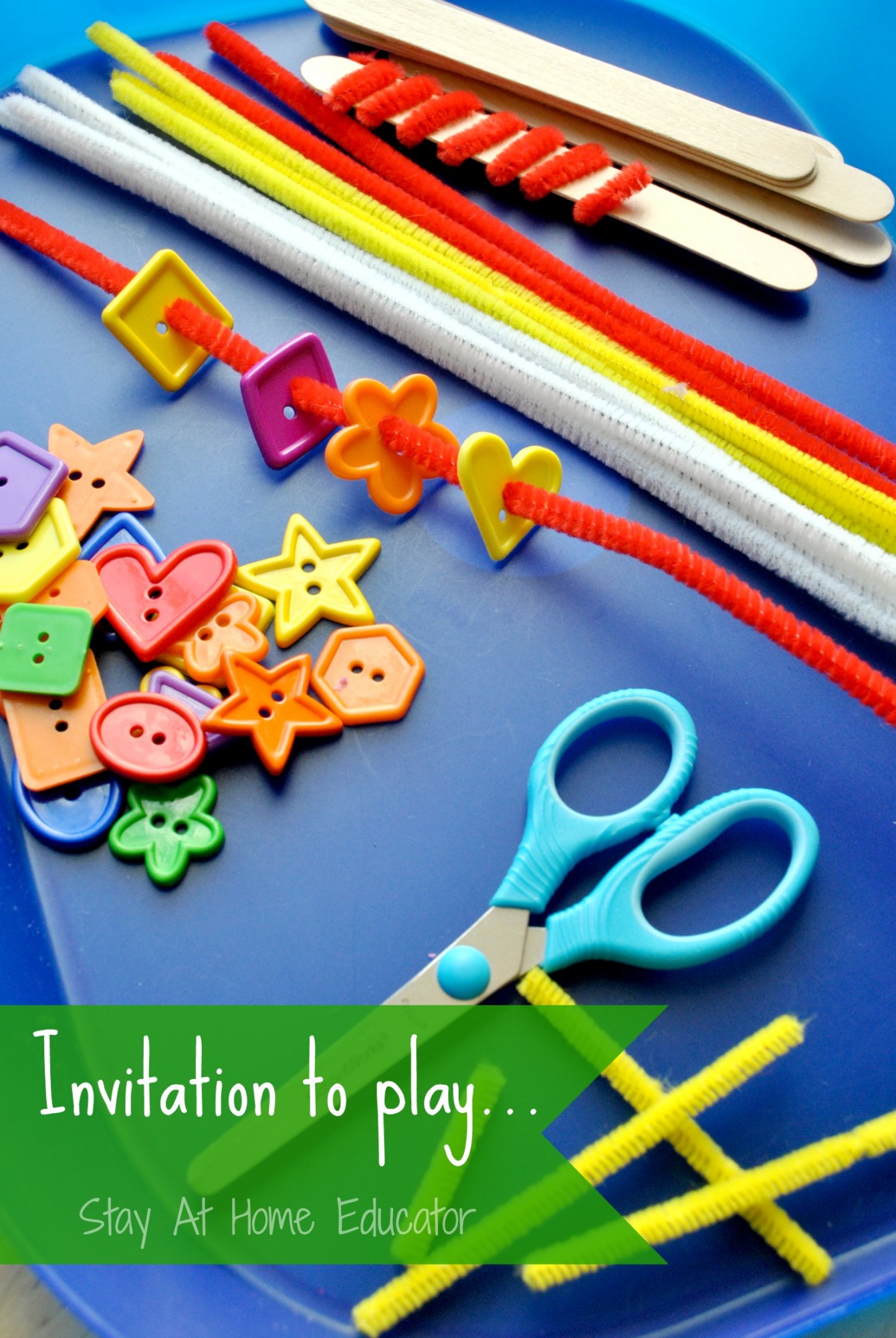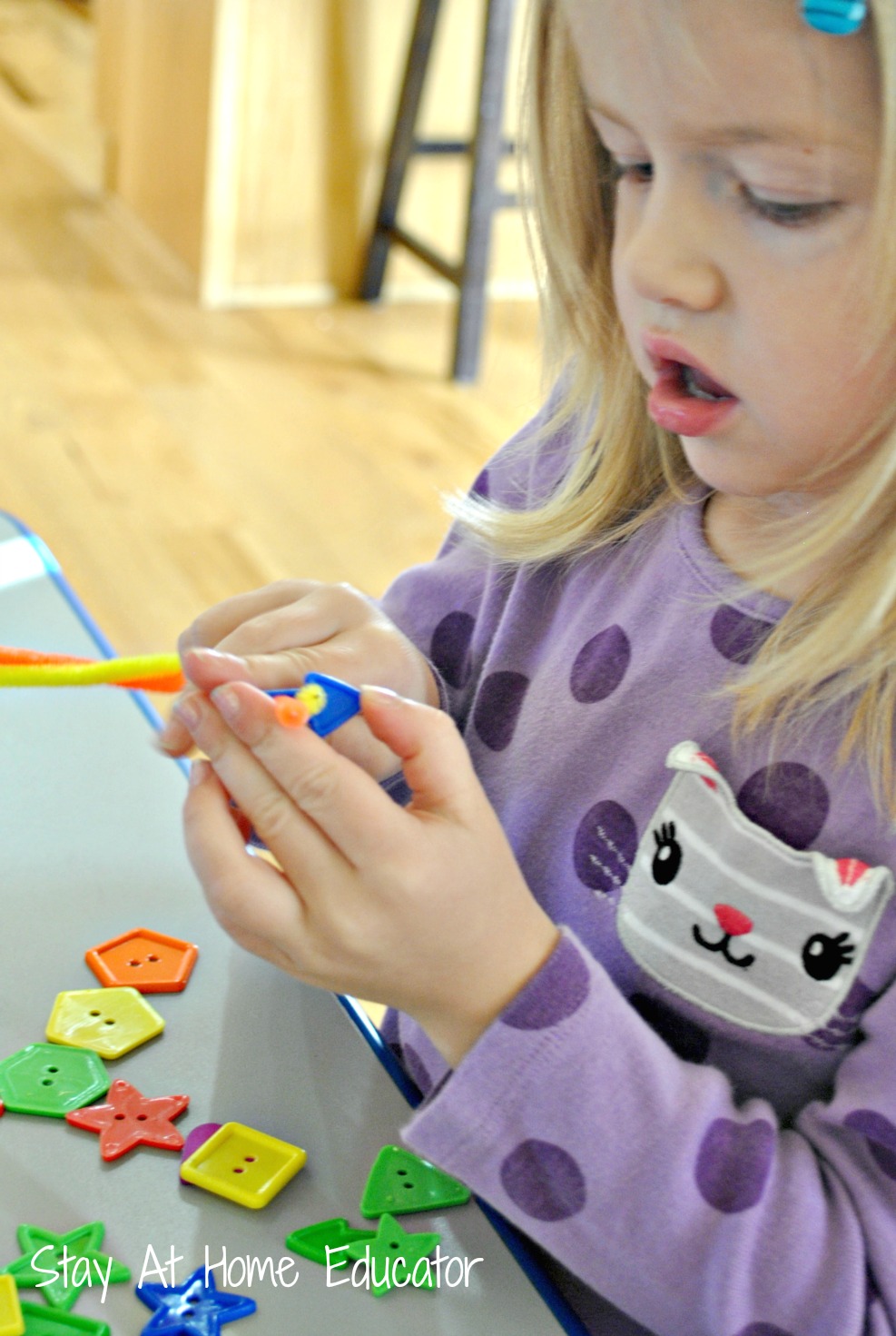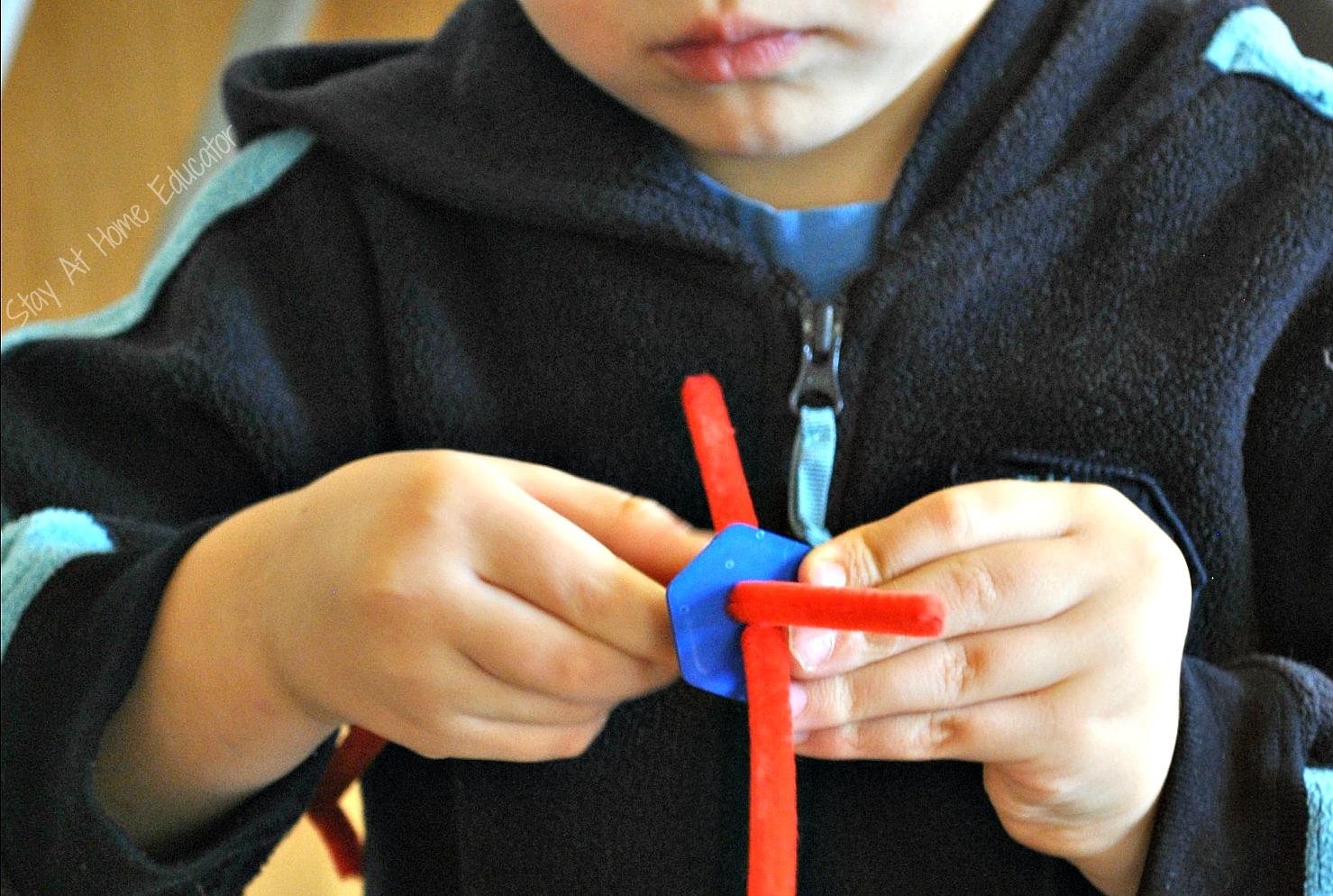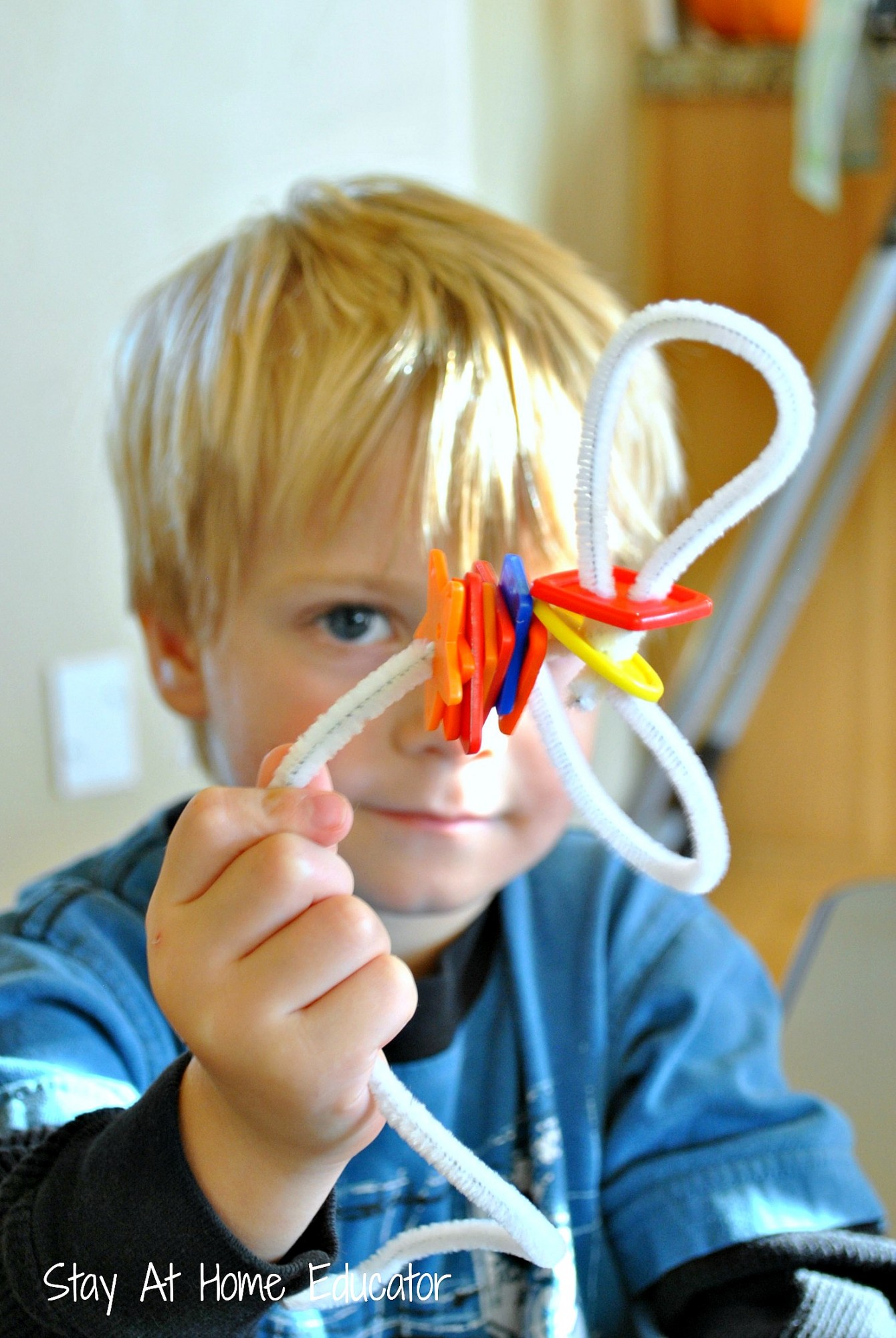An invitation to play is often times a basic set up of materials on a tray. That was the case here, at least. For this invitation to play, I offered my preschool students a few basic materials for them to explore and manipulate as they chose. I had no intended product for my students to produce. My objective was simply for students to manipulate and evaluate the materials to create and play.
 One of the greatest values of sending your child to an in-home preschool is that the teacher typically has the freedom to adjust lesson plans and the curriculum to meet the needs of the child in the most immediate way. This flexibility has allowed me to increase the frequency of some of my most successful teaching strategies, and let the less successful ones pass us by. This changes with each new year, so as a reflective teacher I am constantly considering the things that are working especially well in my preschool classroom. Recently, that would be offering an invitation to play.
One of the greatest values of sending your child to an in-home preschool is that the teacher typically has the freedom to adjust lesson plans and the curriculum to meet the needs of the child in the most immediate way. This flexibility has allowed me to increase the frequency of some of my most successful teaching strategies, and let the less successful ones pass us by. This changes with each new year, so as a reflective teacher I am constantly considering the things that are working especially well in my preschool classroom. Recently, that would be offering an invitation to play.
Join me regularly via subscribing to Stay At Home Educator by email, Facebook, Twitter @StayAtHomeEdu, and Pinterest. This post may contain Amazon affiliate links.
The open ended play that accompanies an invitation to play can be difficult to replace by other teaching strategies, which is just one of many reasons why they are so appropriate for preschoolers. For this invitation to play, I set out a small pile of craft sticks, pipe cleaner, attribute buttons and come scissors. The materials were all placed on a tray for the students. (Since my preschool class this year consists mostly of three year olds, using the scissors to cut the pipe cleaner proved rather difficult, so I helped the students cut their pieces down if needed).
 This student carefully treads two pipe cleaners through the two holes on an arrow button. As she continues, she chooses out only the arrow buttons to thread, every time treading the pipe cleaner through both holes. For this she must be very patient, as it takes a fair amount of dexterity to coordinate both the pipe cleaners.
This student carefully treads two pipe cleaners through the two holes on an arrow button. As she continues, she chooses out only the arrow buttons to thread, every time treading the pipe cleaner through both holes. For this she must be very patient, as it takes a fair amount of dexterity to coordinate both the pipe cleaners.
 This student also threads his pipe cleaners through both holes on a button, but he wants to make his creation stand. It does not, so he must continue to experiment. He moves the placement of the button up and down the pipe cleaners. That does not work. He adds another button. That down not work. Be bends the ends of the pipe cleaner. That does not work. He adds a button to each pipe cleaner, at the end, creating “shoes” for his creation. While that does not work either, he is certainly getting to closer to making his creation stand by making a base.
This student also threads his pipe cleaners through both holes on a button, but he wants to make his creation stand. It does not, so he must continue to experiment. He moves the placement of the button up and down the pipe cleaners. That does not work. He adds another button. That down not work. Be bends the ends of the pipe cleaner. That does not work. He adds a button to each pipe cleaner, at the end, creating “shoes” for his creation. While that does not work either, he is certainly getting to closer to making his creation stand by making a base.
 This student spends his time making a bird, carefully bending the pipe cleaner to make the wings just as he pictures them. He talks about his bird, how it needs buttons to hold it together. He tells his class mates how the bird flies “high, high, high into the sky.” I ask him was kind of bird he has made, and he tells me it is a “flying bird,” and demonstrates to me how it flies because it’s bones are so light.
This student spends his time making a bird, carefully bending the pipe cleaner to make the wings just as he pictures them. He talks about his bird, how it needs buttons to hold it together. He tells his class mates how the bird flies “high, high, high into the sky.” I ask him was kind of bird he has made, and he tells me it is a “flying bird,” and demonstrates to me how it flies because it’s bones are so light.
It is easy to see why I appreciate an good invitation to play and why I try to incorporate more and more of them into my preschool instruction. They are so very appropriate for the kind of learners preschoolers are (exploratory and hands-on), and encompass the kind of learning concepts a preschooler needs. For a few examples:
- asking and answering questions
- developing a mental plan and executing it
- changing plans to try something new
- creating order out of a mess
- exploring what the materials are capable of doing
Enjoy!

I’m Sarah, an educator turned stay-at-home-mama of five! I’m the owner and creator of Stay At Home Educator, a website about intentional teaching and purposeful learning in the early childhood years. I’ve taught a range of levels, from preschool to college and a little bit of everything in between. Right now my focus is teaching my children and running a preschool from my home. Credentials include: Bachelors in Art, Masters in Curriculum and Instruction.

Love this idea! I am going to do this for my 3 year old next week! Thanks for sharing!